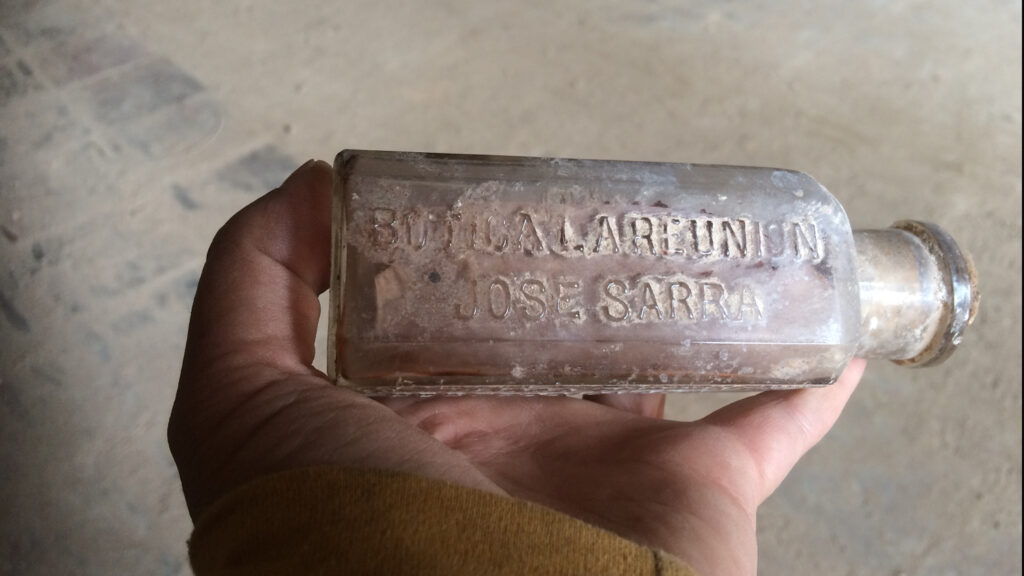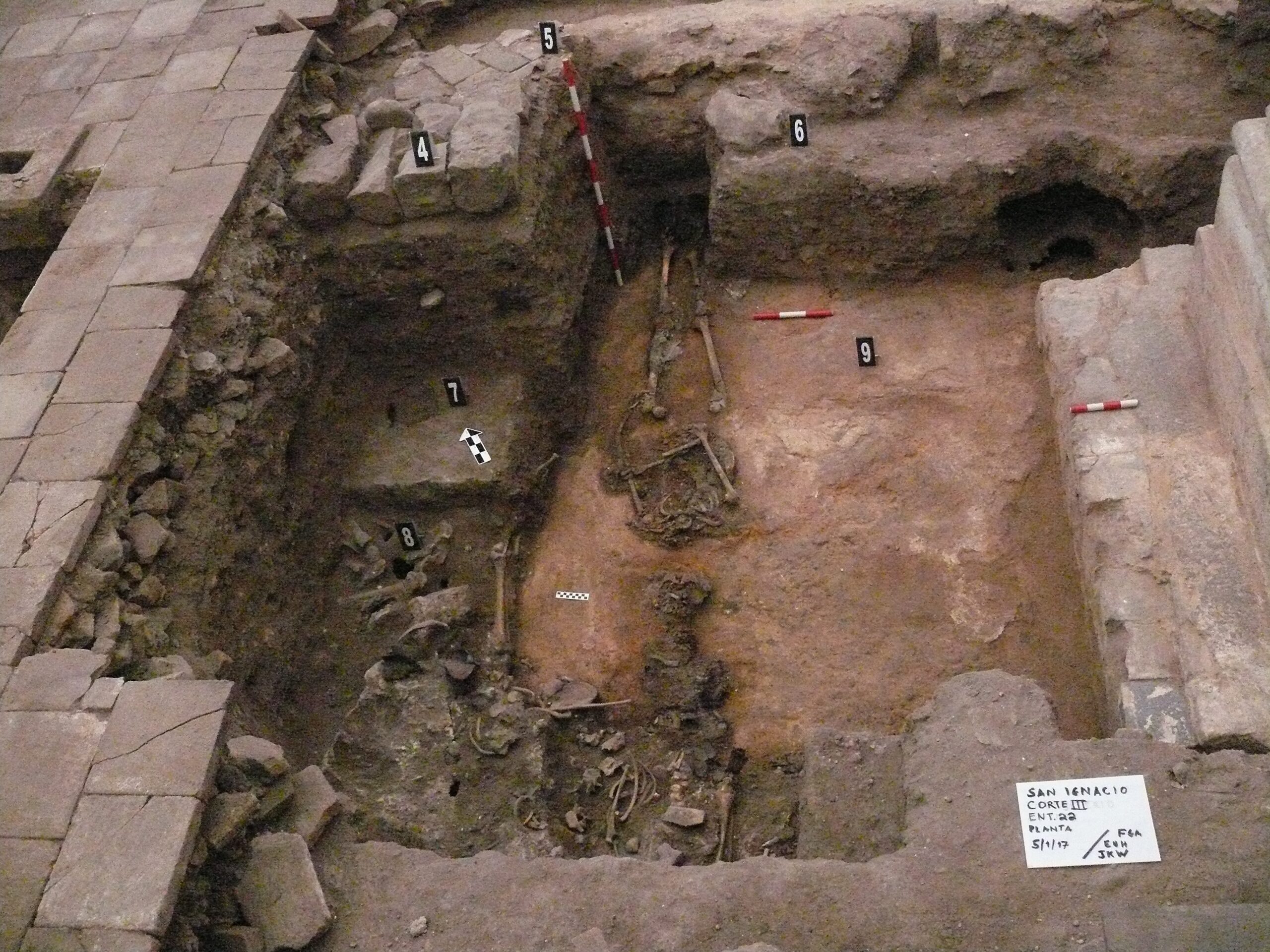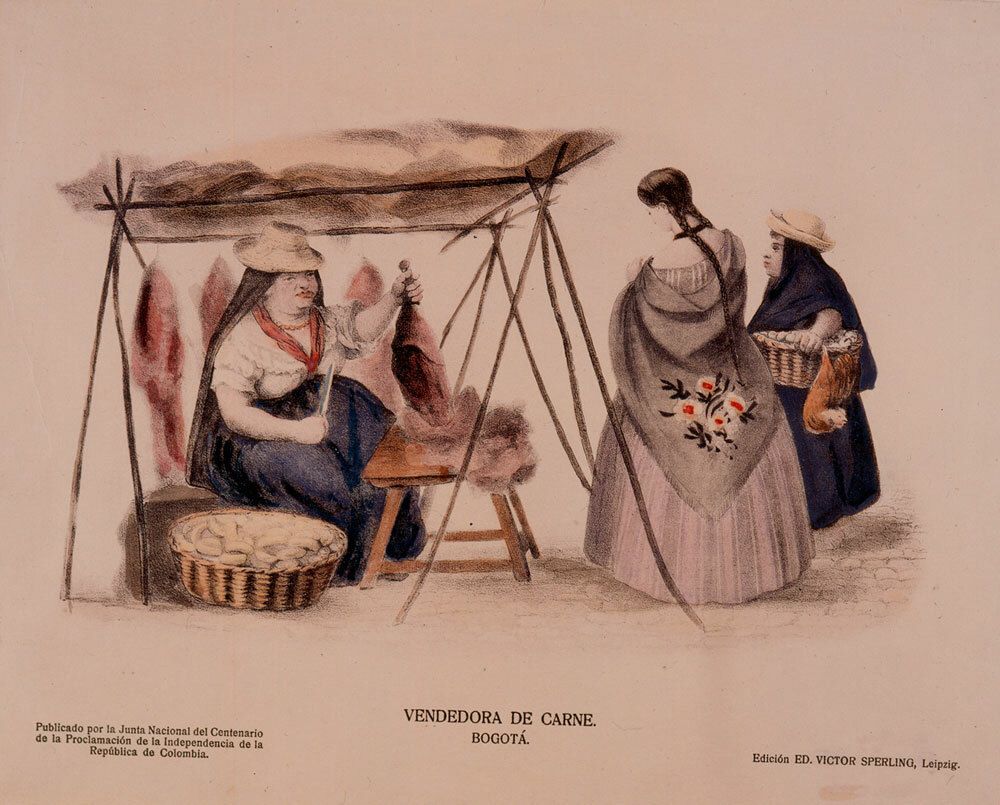Analysis of the Ossuary
Análisis del osario
While our research project focused on systematic excavation of units placed throughout the church, during the first week the construction team uncovered a large deposit of commingled remains next to the stairs of the current entrance to the church’s crypt. These remains were designated as an ‘ossuary’ and collected, though we were unable to distinguish between different bodies at the time of recovery.

Diego Ruiz analizó rasgos en huesos largos del osario para re-asociarlos a individuos.
A total of 28 adult crania (some with rearticulated mandibles), 4 subadult crania, and 17 fetal or neonatal crania were recovered from the ossuary. Bioarchaeology research by Diego Alejandro Ruiz tested different methods for estimating the minimum number of adult individuals using postcranial elements in this commingled context and re-articulating elements based on context, size, and taphonomic characteristics. His research estimated that at least 37 different individuals are represented by postcranial elements.
While it is still unclear why these remains were deposited here, we believe that the individuals likely lived and died during the early Republican period (mid-to-late 19th century). Among the artifacts we recovered, such as gloves, textiles, buttons, and metal coffin adornments, we discovered a glass medicine bottle for effervescent magnesium. This bottle was embossed with the name “Botica La Reunión – José Sarra” and the address “Teniente Rey 41, Habana.” Resources indicate that this well-known Cuban pharmacy was established in CE 1853 and used that name and address until the early 20th century when ownership changed.
Title Image: The ossuary context with commingled remains was found surrounding the wall for the stairs to the entrance of the crypt.
_____________________________________________________________
Durante el transcurso de nuestro proyecto de investigación, nos enfocamos en la minuciosa excavación de unidades dispuestas en toda la iglesia. Sin embargo, en la primera semana, el equipo de construcción hizo un sorprendente hallazgo: un extenso depósito de restos entremezclados junto a la escalinata de la entrada actual a la cripta de la iglesia. Estos restos fueron identificados como un ‘osario’ y, pese a nuestras mejores intenciones, en ese momento nos fue imposible discernir entre los distintos cuerpos.

Una botella de magnesio con el nombre impreso de una botica cubana del siglo XIX
Del osario, se recuperaron un total de 28 cráneos de adultos (algunos de ellos con mandíbulas rearticuladas), 4 cráneos de subadultos y 17 cráneos fetales o neonatales. El trabajo de investigación bioarqueológica, a cargo de Diego Alejandro Ruiz, abordó diversos métodos para estimar el número mínimo de individuos adultos utilizando elementos postcraneales en este contexto de conmixtión, además de rearticular los elementos en función del contexto, el tamaño y las características tafonómicas. Su investigación arrojó la estimación de que al menos 37 individuos diferentes se encuentran representados por medio de elementos postcraneales.
Aunque el motivo detrás de la deposición de estos restos permanece enigmático, tenemos fundadas sospechas de que estos individuos probablemente vivieron y fallecieron durante el período de la República temprana, a mediados o finales del siglo XIX. Entre los artefactos que recuperamos, como guantes, textiles, botones y adornos metálicos de ataúdes, encontramos una botella de medicina de vidrio para magnesio efervescente. Esta botella ostentaba el grabado con el nombre “Botica La Reunión – José Sarra” y la dirección “Teniente Rey 41, Habana”. Los recursos históricos indican que esta destacada farmacia cubana fue fundada en el año 1853 y mantuvo ese nombre y dirección hasta principios del siglo XX, cuando cambió de propietario.
Imagen de título: El osario con restos mezclados fue encontrado alrededor del muro de las escaleras que conducen a la entrada de la cripta


